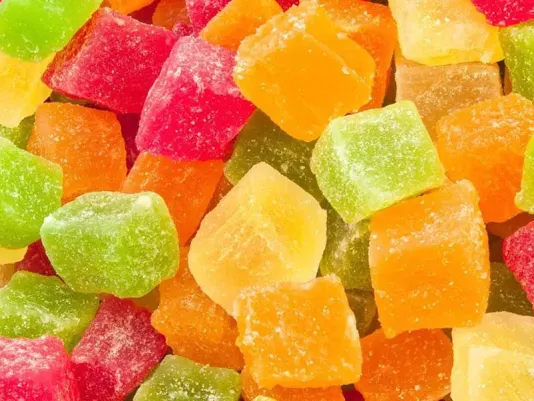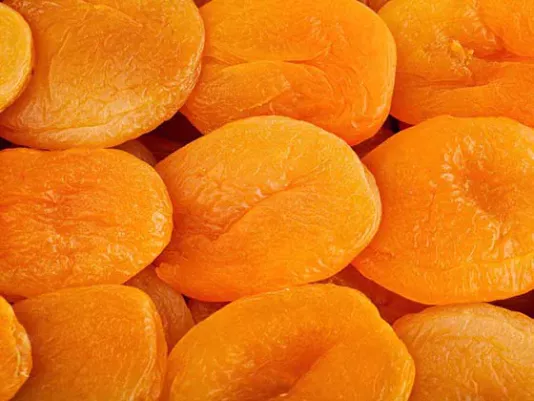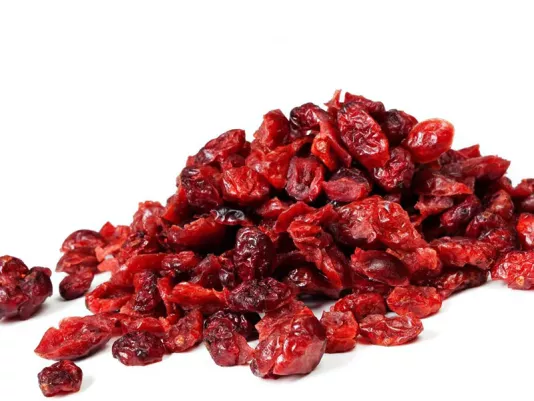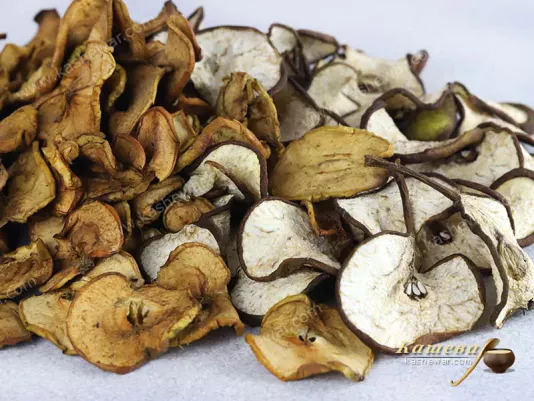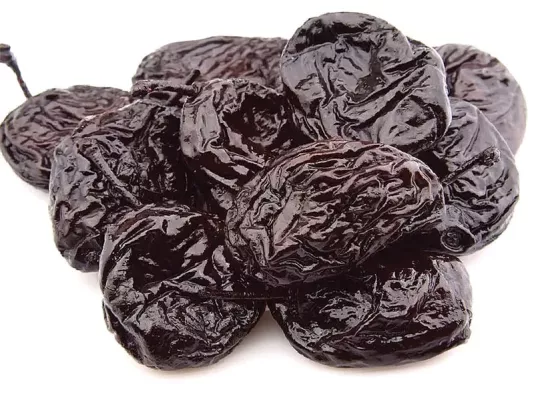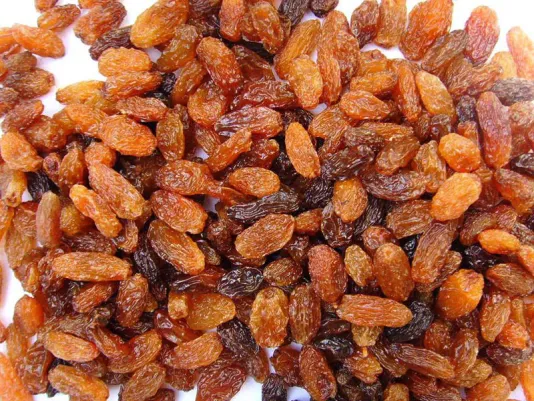Dried and Candied Fruits
Dried fruits and candied fruits have become a real find for me, as they combine benefits and taste in a convenient format. When there is no opportunity to have fresh fruits, I always grab a handful of raisins or dried apricots and get a quick boost of energy. I like to add figs or dates to oatmeal, and dried apples – to compotes that bring the aroma of childhood. Candied fruits for me are more about desserts: I use them in Easter cakes, muffins, and even in homemade chocolate bars. I like that they not only preserve the taste of fruits but also give dishes bright colors and a festive look. For me, dried fruits and candied fruits are products that always find a place in my kitchen, regardless of the season.
Different Types of Dried Fruits and Candied Fruits
Raisins, Dried Apricots, and Dates
Raisins have always been the simplest and most convenient dried fruit for me. I add them to baked goods – from sweet buns and rolls to cheesecakes and cakes, because they give a light sweetness and make the dough more juicy. In childhood, I often ate them by handfuls, and this habit remained: raisins for me are a quick snack that requires no preparation. They also go perfectly with nuts, and I often use this combination for homemade energy bars. Dried apricots have always been a symbol of health for me. I love them for their rich taste and bright color, which add sunshine to dishes. Most often I use dried apricots in uzvar and compotes, because they give the drink a pleasant sourness. In baked goods they become soft and juicy, so pies and rolls with dried apricots always turn out special. I also chop them and add to oatmeal or yogurt for a nutritious breakfast. Dates are more exotic for me, but they have become an important element in my kitchen. I use them as a natural sugar substitute in desserts: chopped dates perfectly sweeten dough or energy balls. Their taste is thick, honey-like, and very rich, so even a few pieces can make a dish special. I love stuffing dates with nuts – it is a simple and healthy dessert that always impresses guests. For me, raisins, dried apricots, and dates are the foundation among dried fruits. They are always at hand and open up many possibilities: from a simple snack to complex culinary creations. These products help me diversify my diet and make it healthier and more interesting.
Figs, Dried Apples, and Pears
Figs have always been a special dried fruit for me, as their rich flavor and delicate texture make them unique. I like to eat them on their own as a sweet snack, but even more – to use them in baking. Figs go wonderfully with nuts and honey, so I often make pastries with them or add them to muffins. In salads, they create an interesting contrast: the sweet taste of figs harmonizes well with salty cheese or greens. Dried apples for me are the taste of childhood. I remember how they were dried at home for winter and then used for uzvar. I still make this drink, as it gives warmth and the aroma of summer even on cold days. Besides drinks, dried apples are great for pies or porridge, where they swell and become soft, releasing their aroma into the dish. Pears in dried form are more delicate for me, but no less valuable. Their taste is gentle and slightly honeyed, so they are suitable for desserts, especially when I want to create something light and not too sweet. I also add dried pears to compotes along with apples, and this duet always turns out harmonious. I consider figs, dried apples, and pears dried fruits that bring variety and sophistication to the everyday menu. They are convenient to store and always help when I want to prepare something tasty and healthy without extra effort.
Candied Fruits from Citrus and Other Fruits
Candied fruits have always been a symbol of celebration for me. They are bright, aromatic, and give desserts a special mood. I love candied orange or lemon peels the most: they have a pleasant bitterness and pair perfectly with chocolate. I often add them to muffins, Easter cakes, or homemade chocolate, as they give baked goods not only flavor but also bright color accents. Candied fruits also work well as an independent sweet treat with tea or coffee, especially when I want something unusual. Besides citrus, I use candied fruits from other fruits – for example, pineapple or melon. They are sweeter and more tender, so they are suitable for cakes and ice cream. I love adding them to yogurt or oatmeal, where they replace fresh fruits in the cold season. Sometimes I combine several types of candied fruits in baked goods, creating colorful and aromatic mixes. I noticed that candied fruits not only decorate dishes but also make them special. They add new flavor notes even to the simplest cookies or buns. For me, this is a universal ingredient that is always worth having at home to quickly turn an ordinary recipe into a festive one. That is why I love working with candied fruits – they always bring joy to me and to those who taste my dishes.
Exotic Dried Fruits
Exotic dried fruits for me are always a way to diversify the menu and try new flavor combinations. I love dried mango for its bright sweetness and pleasant chewy texture. It is great for snacks but shows itself even better in salads or as a complement to cheeses. Dried pineapple is more delicate for me, with a slight sourness, and I often add it to yogurt or homemade bars. I also discovered dried bananas, which are completely different from fresh ones. They become sweeter and crunchier, so I use them in muesli or granola. Dried papaya or kiwi are rarer guests in my kitchen, but they always add originality to dishes. I like to combine them with nuts, creating bright mixes for snacks. I consider exotic dried fruits a wonderful way to add variety to the diet. They are suitable not only for desserts but also for savory dishes – for example, dried mango or pineapple can be added to sauces for chicken or fish. For me, these are products that open up new culinary horizons and make even simple dishes unusual. I always rejoice when I find a new type of dried fruit, as it means that new experiments and discoveries will appear in my kitchen.
Storage and Use of Dried Fruits and Candied Fruits
I always pay attention to how I store dried fruits and candied fruits, because their quality and benefits depend on it. I keep raisins, dried apricots, or figs in tightly closed containers in a cool and dry place. This helps avoid excess moisture and preserve their natural taste. I most often store candied fruits in glass jars, as this way they stay aromatic longer and do not lose brightness. When I buy dried fruits by weight, I always check that they are not too sticky or over-dried. In use, dried fruits and candied fruits are universal for me. I add dried fruits to compotes, uzvar, porridge, or baked goods, because they give dishes richness and aroma. Candied fruits for me are more associated with holidays: Easter cakes, muffins, or pastries with them always turn out bright and special. I also love mixing dried fruits with nuts to make nutritious snack mixes. Sometimes I use them in sauces for meat or add them to salads, creating new combinations. My experience shows that dried fruits and candied fruits are products that can be used every day, changing accents in the menu. They help make the diet more varied, healthy, and at the same time tasty. I always keep several types of dried fruits and at least one jar of candied fruits at home, as I know they will come in handy both on weekdays and during holiday preparations.
